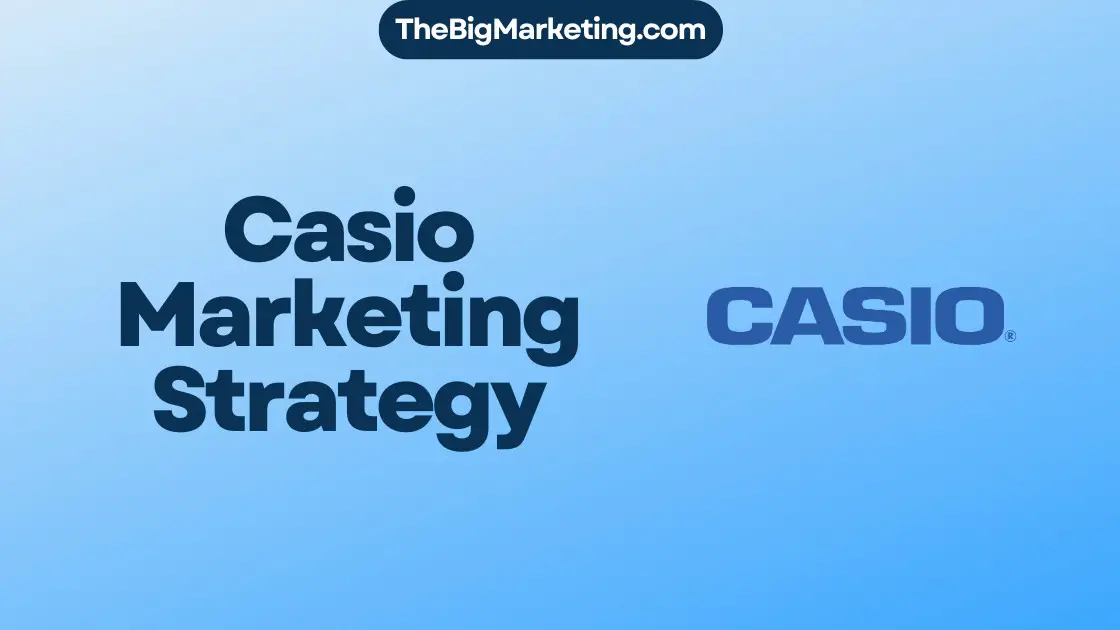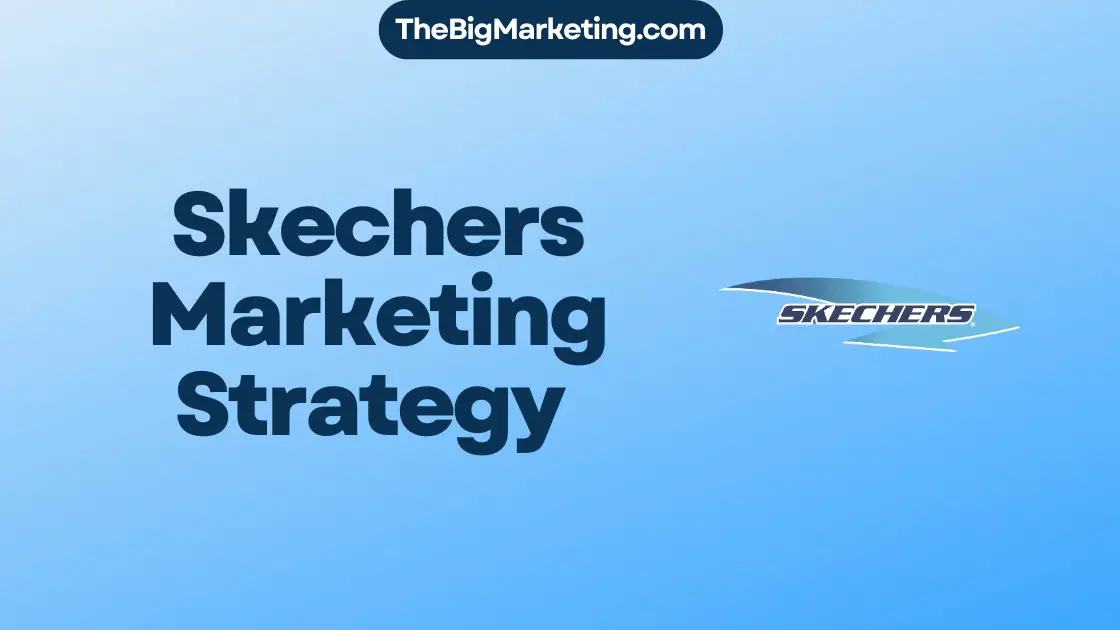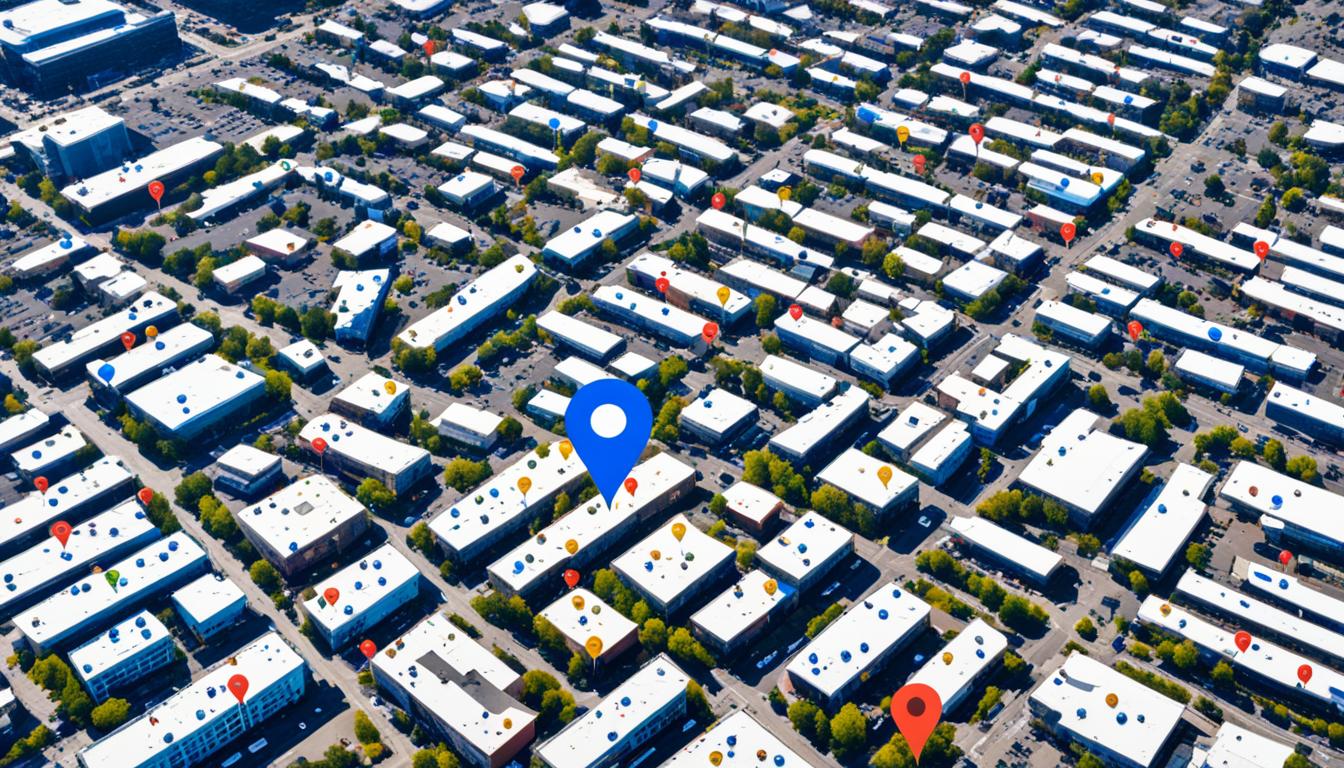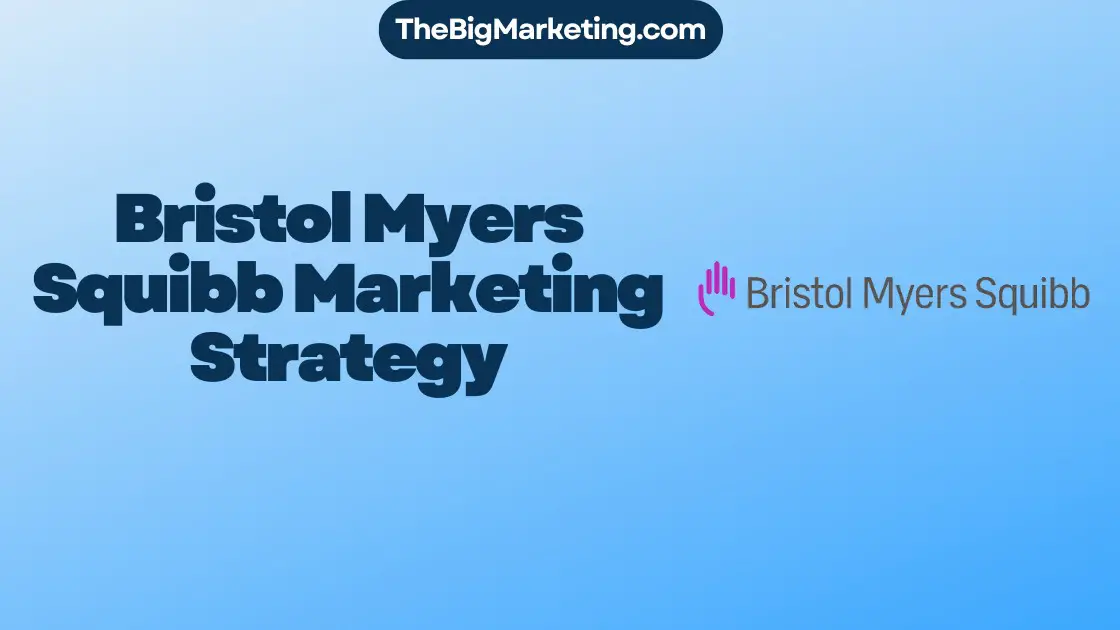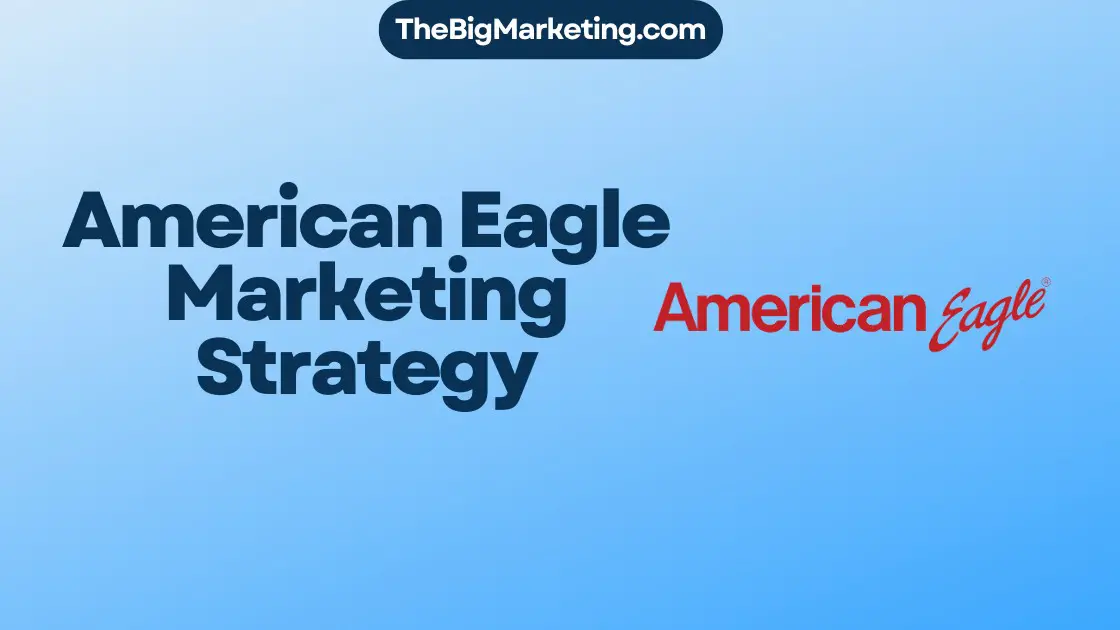B2B SAAS marketing is a unique and essential aspect of success in the Software as a Service (SAAS) industry. Companies that invest more in marketing outperform their competitors, making it crucial to develop a winning B2B SAAS marketing strategy. In this article, we will explore the key elements of B2B SAAS marketing and provide valuable insights to help you navigate this complex landscape.
Key Takeaways:
- B2B SAAS marketing is a crucial aspect of success in the industry, with companies that invest more in marketing outperforming their competitors.
- Developing a winning B2B SAAS marketing strategy requires setting clear goals and objectives, creating a budget and resource plan, and identifying target audiences and personas.
- B2B SAAS marketing stands out from other types of marketing due to the complex customer journey, lengthy purchase process, and persona targeting.
- To create a successful B2B SAAS marketing strategy, it is essential to set clear goals and objectives, define target audiences and personas, and allocate resources effectively.
- Implementing effective marketing strategies such as growth loops, content marketing and SEO, affiliate programs, and community marketing is crucial for success in the SAAS industry.
What Makes B2B SaaS Marketing Special
B2B SaaS marketing is a distinct form of marketing that sets itself apart from other types of marketing strategies. It requires a deep understanding of the unique aspects that come with marketing software as a service in a B2B context. In this section, we will explore the factors that make B2B SaaS marketing special and highlight the challenges and opportunities it presents.
The Complex B2B SaaS Customer Journey
One of the unique aspects of B2B SaaS marketing is the complexity of the customer journey. Unlike B2C marketing, where the customer journey may be shorter and more straightforward, the B2B SaaS customer journey can span weeks or even months. Prospective customers go through different stages, from discovering a solution to evaluating options, negotiating contracts, and finally making a purchase decision.
The Multistakeholder B2B SaaS Purchase Process
In B2B SaaS marketing, the purchase decision is typically made by a group of stakeholders within the target organization. This multistakeholder purchase process adds another layer of complexity, as each stakeholder has their own needs, priorities, and concerns. B2B SaaS marketers must navigate these dynamics and tailor their strategies to engage and convince each stakeholder effectively.
Persona Targeting in B2B SaaS Marketing
Persona targeting plays a crucial role in B2B SaaS marketing. By identifying and understanding the different personas involved in the purchase process, marketers can create targeted messaging and content that resonates with each persona. Persona targeting enables marketers to address specific pain points, highlight relevant product features, and provide value propositions that meet the unique needs of each persona.
In the next section, we will delve into the process of creating a winning B2B SaaS marketing strategy. By incorporating the unique aspects discussed in this section, marketers can develop effective strategies that drive growth, attract customers, and achieve their business objectives.
Creating a Winning B2B SaaS Marketing Strategy
To achieve success in the competitive B2B SaaS industry, it is crucial to develop a well-crafted marketing strategy. A winning B2B SaaS marketing strategy involves several key elements that contribute to its effectiveness and drive results. In this section, we will explore these key elements and how they work together to create a successful marketing plan.
Setting Goals and Objectives
Setting clear goals and objectives is the foundation of a strong B2B SaaS marketing strategy. These goals provide direction and a clear vision for your marketing efforts. They help align the team and ensure everyone is working towards the same goal. With well-defined goals, you can measure progress and make data-driven decisions to optimize your strategy for maximum effectiveness.
Benefits of Clear Goals and Objectives
Clear goals and objectives provide numerous benefits in B2B SaaS marketing. They improve focus by outlining the specific outcomes you want to achieve. They also provide greater clarity, as they define what success looks like for your marketing efforts. Additionally, clear goals and objectives increase motivation, as they create a sense of purpose and drive among team members. With clear goals in place, you can work more efficiently and prioritize projects based on their potential impact on reaching your goals.
Building a Budget and Resource Plan
In order to execute your B2B SaaS marketing strategy effectively, you need to have a comprehensive budget and resource plan. This ensures that you have the necessary resources, such as funding, staff, and tools, to support your marketing activities. By allocating resources strategically, you can maximize the effectiveness and return on investment (ROI) of your marketing efforts.
Defining Target Audiences and Personas
Identifying your target audiences and creating detailed personas is essential in B2B SaaS marketing. Understanding who your ideal customers are, their pain points, and their buying behavior allows you to tailor your marketing messages and strategies to resonate with them. By defining target audiences and personas, you can optimize your marketing efforts and increase the likelihood of reaching the right people with the right message at the right time.
The image above represents the importance of a comprehensive marketing strategy in B2B SaaS. It visually emphasizes the key elements discussed in this section.
Setting B2B SAAS Marketing Goals and Objectives
Setting clear goals and objectives is a fundamental aspect of B2B SAAS marketing. By defining specific targets, companies can align their strategies and efforts to drive success in the competitive SAAS industry. Let’s explore the benefits of setting clear goals and objectives and how they contribute to improved focus, greater clarity, increased motivation, more efficiency, and measurable progress.
Improved Focus
Clear goals and objectives provide a sense of direction and purpose for B2B SAAS marketing teams. When everyone understands the desired outcomes, it becomes easier to prioritize tasks, allocate resources effectively, and stay focused on achieving the goals at hand. By having a clear vision in mind, the entire team can work together towards a common objective, minimizing distractions and maximizing productivity.
Greater Clarity
Setting goals and objectives promotes greater clarity in both strategic planning and day-to-day operations. When the desired outcomes are clearly defined, it becomes easier to develop a roadmap, determine the necessary actions, and identify any potential challenges. This clarity enables marketers to make informed decisions, allocate resources more efficiently, and adapt their strategies as needed to stay on track towards achieving their goals.
Increased Motivation
Clear goals and objectives act as motivators for B2B SAAS marketing teams. When individuals have a clear understanding of what they are working towards, they feel a sense of purpose and are more likely to stay motivated throughout the marketing journey. This increased motivation translates into higher engagement, creativity, and commitment towards achieving the desired results, ultimately driving the success of the marketing campaigns.
More Efficiency
With clear goals and objectives in place, B2B SAAS marketing teams can operate more efficiently. By having a well-defined direction, teams can prioritize tasks, allocate resources effectively, and avoid wasting time and effort on activities that do not align with the overarching goals. This enhanced efficiency allows marketers to make the most of their resources and deliver impactful results within allocated budgets and timelines.
Measurable Progress
Setting clear goals and objectives enables companies to measure their progress accurately. By establishing key performance indicators (KPIs) and milestones, marketers can track their efforts, identify areas for improvement, and make data-driven decisions to optimize their strategies. This measurement of progress provides valuable insights into the effectiveness of marketing initiatives, allowing for continuous improvement and adjustment to achieve desired outcomes.
To illustrate the importance of setting clear goals and objectives, consider the following table:
| Goal | Objective | Key Result |
|---|---|---|
| Increase brand awareness | Gain 10,000 new social media followers | Increment of social media followers by 20% within six months |
| Generate leads | Collect 500 qualified email addresses | 50% conversion rate from email subscriptions to leads |
| Improve customer retention | Reduce churn rate by 15% | Churn rate decrease by 5% each quarter |
This table outlines specific goals, objectives, and key results for different areas of B2B SAAS marketing. By setting clear, measurable targets, companies can track their progress and evaluate the success of their marketing efforts.
By setting clear goals and objectives, B2B SAAS marketing teams can improve their focus, gain greater clarity, increase motivation, operate with more efficiency, and track measurable progress. These benefits contribute to the overall success of marketing campaigns and help companies achieve their desired outcomes in the competitive SAAS industry.
Building a Budget and Resource Plan
In B2B SAAS marketing, a well-defined budget and resource plan are crucial elements for success. By establishing clear goals and objectives, you can accurately identify the resources needed to achieve them and allocate them effectively. This strategic approach ensures that your marketing efforts are aligned with your objectives and maximize the return on investment (ROI).
Defining goals and objectives is the first step in building a budget and resource plan. By setting specific and measurable targets, such as increasing leads by 20% or improving customer retention by 15%, you provide your marketing team with a clear direction and purpose. This clarity allows for better resource allocation as you can determine which projects and initiatives are most aligned with your goals and are likely to yield the highest ROI.
Once you have defined your goals and objectives, it is essential to prioritize projects based on their potential impact and ROI. By assessing the expected outcomes and aligning them with your goals, you can identify which initiatives should receive more resources and attention. This prioritization ensures that your limited resources are allocated to the most promising projects, optimizing your chances of success.
Monitoring and evaluating the results of your marketing efforts regularly is another critical aspect of building a budget and resource plan. By keeping a close eye on key performance indicators (KPIs) and metrics, you can identify areas of improvement and make data-driven decisions. This iterative process allows you to reallocate resources, adjust strategies, and make improvements to your marketing activities to optimize performance and ROI.
| Benefits of Building a Budget and Resource Plan |
|---|
| 1. Improved Focus |
| 2. Enhanced Efficiency |
| 3. Prioritized Projects |
| 4. Resource Optimization |
| 5. Measurable Results |
Building a budget and resource plan is not a one-time task but an ongoing process that requires regular evaluation and adjustments. By continuously monitoring and analyzing the results of your marketing efforts, you can ensure that your resources are allocated effectively and drive optimal results. By prioritizing projects based on ROI and aligning them with your goals, you can maximize the impact of your marketing activities and achieve long-term success in the B2B SAAS industry.
Tips for Building an Effective Budget and Resource Plan:
- Clearly define your goals and objectives
- Identify the resources required to achieve your goals
- Prioritize projects based on their potential impact and ROI
- Regularly monitor and evaluate the results of your marketing efforts
- Make data-driven decisions to optimize resource allocation
Identifying B2B SaaS Target Audiences and Personas
In B2B SaaS marketing, the key to success lies in understanding your target audiences and persona targeting. By identifying the right target audiences and creating personas, you can tailor your marketing messages and strategies to effectively reach and engage specific groups of potential customers.
When it comes to B2B SAAS Target Audiences, it’s crucial to have a deep understanding of their needs, pain points, and decision-making processes. This knowledge allows you to develop marketing campaigns that resonate with your target audiences and drive conversions.
By identifying B2B SAAS Personas, you can create semi-fictional representations of your ideal customers. These personas help you gain insights into your target audiences’ motivations, preferences, and behaviors. Having a clear understanding of your personas enables you to develop personalized marketing messages that speak directly to their unique needs and interests.
Importance of Identifying Target Audiences
Identifying your B2B SAAS target audiences is essential for several reasons:
- Effective Messaging: By knowing your audience, you can tailor your marketing messages to their specific pain points and motivations, increasing the likelihood of resonating with them.
- Efficient Resource Allocation: Identifying your target audiences allows you to allocate your marketing resources effectively. By focusing on the audiences most likely to convert, you can optimize your budget and efforts.
- Enhanced Customer Experience: Understanding your target audiences helps you create a better customer experience by providing relevant and valuable information that addresses their specific challenges and goals.
Benefits of Persona Targeting
Persona targeting in B2B SAAS marketing offers several key benefits:
- Improved Personalization: Personas allow you to craft marketing messages that directly speak to your target audiences’ needs, pain points, and motivations, increasing the effectiveness of your campaigns.
- Enhanced Customer Engagement: By understanding your personas, you can engage potential customers more effectively, building stronger relationships and driving higher levels of engagement.
- Increased Conversions: Tailoring your marketing messages to personas increases the likelihood of converting potential customers into paying customers.
Effective B2B SAAS marketing involves tailoring your marketing messages and strategies to your target audiences and personas. By understanding their needs and preferences, you can deliver personalized experiences that drive engagement, conversions, and ultimately, business success.
Growth Loops: The New Marketing Funnel
Growth loops have emerged as the new marketing funnel in the B2B SAAS industry. Unlike traditional marketing funnels that focus mainly on acquiring new customers, growth loops embrace self-compounding marketing initiatives aimed at both user retention and the creation of a strong user base.
By leveraging growth loops, B2B SAAS companies can achieve exponential growth and long-term success. These loops are designed to continually drive user engagement, conversion, and advocacy, creating a virtuous cycle that fuels business growth.
One key differentiator between growth loops and traditional marketing funnels is their focus on user retention. While marketing funnels typically end at the conversion stage, growth loops prioritize keeping existing users engaged and satisfied, recognizing the value of customer retention.
Achieving high user retention rates is crucial for sustainable growth in the B2B SAAS industry. By ensuring customers continuously derive value from the product or service, B2B SAAS companies can decrease churn rates and increase customer lifetime value.
Moreover, growth loops enable B2B SAAS companies to amplify their marketing efforts through user-generated content, referrals, and testimonials. Satisfied and loyal customers become advocates for the brand, driving organic growth and attracting new customers through positive word-of-mouth.
To fully leverage growth loops, B2B SAAS companies should focus on creating self-compounding marketing initiatives. These initiatives should be designed to encourage users to engage with the product or service, invite others to join, and provide feedback or reviews.
The feedback and insights gained from active users can be utilized to make the necessary improvements to the product or service, leading to a better user experience and increased customer satisfaction. This iterative process builds stronger relationships with users and facilitates continuous growth.
Growth Loops vs. Marketing Funnels
While growth loops and marketing funnels serve the ultimate purpose of driving business growth, they differ significantly in their approach and focus.
Marketing funnels traditionally follow a linear path, guiding potential customers from awareness to consideration, and finally, to conversion. The emphasis is on acquiring new leads and driving them towards making a purchase.
On the other hand, growth loops prioritize acquiring and retaining customers. They employ strategies to continuously engage existing users, encourage advocacy, and drive referral-based growth. Growth loops recognize that satisfied customers are more likely to continue using the product or service, while also influencing others to become new customers.
By emphasizing user retention and advocacy, growth loops introduce a continuous process of growth and expansion. They aim to create a strong community of loyal users who not only derive value from the product or service but actively promote it to others.
Compared to traditional marketing funnels, growth loops offer a more sustainable and scalable approach to business growth. Instead of focusing primarily on acquiring new leads, growth loops harness the power of existing customers to organically attract new ones, resulting in self-compounding growth.
Importance of User Retention
User retention is a critical factor in the success of B2B SAAS companies. While customer acquisition is important, retaining existing customers is equally, if not more, valuable.
High user retention rates lead to several benefits for B2B SAAS companies:
- Increased customer lifetime value: Retaining customers over the long term allows companies to generate more revenue from each customer.
- Lower customer acquisition costs: Acquiring new customers can be costly, making customer retention a more cost-effective strategy.
- Enhanced brand loyalty: Satisfied customers are more likely to remain loyal to a brand and recommend it to others.
- Positive word-of-mouth and referrals: Loyal customers can become brand advocates, driving organic growth through referrals and positive reviews.
User retention should be a key focus for B2B SAAS companies, as it lays the foundation for sustained growth and success in the industry.
Leveraging Growth Loops
Leveraging growth loops involves implementing strategies and initiatives that promote user retention and advocacy. Here are some effective approaches to leverage growth loops in B2B SAAS marketing:
- Personalization: Tailor the user experience and messaging to individual customers, increasing satisfaction and engagement.
- Customer feedback and reviews: Encourage customers to provide feedback and reviews, which can be used to improve the product or service and showcase social proof.
- Referral programs: Incentivize existing customers to refer others, rewarding them for their advocacy and driving organic growth.
- Upselling and cross-selling: Offer additional products or services to existing customers, increasing revenue per customer and further solidifying their relationship with the brand.
- Community-building: Foster a sense of community among users, providing a platform for engagement, knowledge-sharing, and collaboration.
By effectively leveraging growth loops, B2B SAAS companies can create a self-sustaining system that drives continuous growth and positions them for long-term success in the industry.
Crafting an Effective Homepage and Website
An impactful homepage and well-designed website are indispensable in B2B SAAS marketing. As the first impression potential customers have of a company, it is vital to address their questions and concerns, create a strong initial impact, and highlight the value and benefits of the SAAS product or service.
When visitors arrive on a B2B SAAS homepage, they are seeking specific information and answers to their questions. By providing clear and concise content, focusing on the pain points of the target audience, and showcasing the unique selling points of the SAAS product, companies can effectively address customer concerns and generate trust.
An aesthetically pleasing and user-friendly website design is equally essential. It should incorporate intuitive navigation, visually appealing graphics, and a responsive layout to ensure a seamless browsing experience across different devices. By optimizing website performance, load speed, and mobile responsiveness, companies can create a positive user experience that encourages further engagement and exploration.
Creating a strong first impression is crucial in capturing the attention and interest of potential customers. Attention-grabbing headlines, compelling visuals, and engaging content help establish credibility and demonstrate expertise in the SAAS industry. Companies should focus on showcasing success stories, testimonials, and case studies to build trust and provide social proof of their SAAS solution’s effectiveness.
Furthermore, a well-crafted homepage and website should strategically guide visitors along the customer journey. Call-to-action buttons, email signup forms, and chatbots can be strategically placed to capture leads and encourage further interaction. Ensuring easy access to contact information, support channels, and FAQs enables visitors to find answers quickly and enhances their overall experience.
Addressing Customer Questions and Concerns
A critical aspect of crafting an effective homepage and website is addressing customer questions and concerns proactively. By anticipating and providing solutions to common queries, companies can instill confidence in potential customers and alleviate any doubts they may have. Commonly asked questions should be prominently featured on the homepage or in a dedicated FAQ section to provide immediate answers and demonstrate transparency.
Additionally, incorporating customer testimonials, case studies, and success stories into the website can reassure potential customers by showcasing real-world examples of how the SAAS product or service has positively impacted businesses. This social proof highlights the credibility and effectiveness of the SAAS solution, helping potential customers feel more comfortable and confident in their decision-making process.
Creating a Strong First Impression
The importance of creating a strong first impression cannot be overstated in B2B SAAS marketing. An eye-catching and visually appealing homepage can captivate visitors, enticing them to explore further and delve into the SAAS product or service. By incorporating high-quality images, impactful headlines, and persuasive copy, companies can make an immediate impact on potential customers and pique their interest.
In addition to visual appeal, a well-designed homepage should provide clear and concise messaging that articulates the unique value and benefits of the SAAS solution. Highlighting key features, competitive advantages, and measurable outcomes helps differentiate the company from competitors and resonates with the target audience’s pain points and objectives.
Figure 8: Example of a visually appealing B2B SAAS homepage that effectively addresses customer questions and concerns
By crafting an effective homepage and website, B2B SAAS companies can make a lasting impression on potential customers and lay the foundation for successful marketing initiatives. Addressing customer questions and concerns, creating a strong first impression, and showcasing the value and benefits of the SAAS product or service are key elements in driving engagement, conversions, and growth in the highly competitive SAAS industry.
Best B2B SAAS Marketing Strategies for 2024
Implementing effective marketing strategies is crucial in B2B SAAS marketing. In order to thrive in 2024, businesses need to stay ahead of the competition and leverage the latest trends and techniques. Here are some of the top B2B SAAS marketing strategies that will drive success:
Growth Loops
Growth loops have emerged as the new marketing funnel in B2B SAAS. These self-compounding marketing initiatives focus on user retention and building a strong user base. By continuously improving the product or service and creating a seamless user experience, businesses can fuel exponential growth and achieve long-term success.
Content Marketing and SEO
Content marketing and SEO are essential strategies for driving organic traffic and boosting brand visibility. By creating high-quality, informative content and optimizing it for search engines, businesses can attract relevant leads and establish themselves as industry thought leaders.
Affiliate Programs
Implementing an affiliate program can be an effective way to expand reach and generate leads. By partnering with affiliates who have a relevant audience, businesses can benefit from increased brand exposure and receive qualified referrals.
Community Marketing
Building a strong community around the SAAS product or service can significantly impact brand loyalty and customer acquisition. By fostering engagement, offering valuable resources, and nurturing relationships with customers, businesses can create a loyal user base that advocates for their brand.
Sponsoring Media Sites and Influencer Sponsorships
Collaborating with media sites and influencers in the industry can help businesses reach a wider audience and gain credibility. By sponsoring content or partnering with influencers who have influence over the target audience, businesses can establish trust and attract new customers.
Product Hunt Launch
Launching on Product Hunt can generate significant buzz and visibility for a SAAS product or service. By presenting the offering to a community of early adopters and tech enthusiasts, businesses can drive traffic, gain valuable feedback, and potentially secure partnerships.
Manual Outreach
Personalized outreach via channels like LinkedIn and email can be highly effective in establishing connections and generating leads. By crafting tailored messages and engaging in meaningful conversations, businesses can nurture relationships and convert prospects into customers.
Joining SaaS Marketing Communities
Collaborating with other professionals in the SAAS industry through online communities and forums can provide valuable insights, networking opportunities, and potential partnerships. By actively participating and sharing knowledge, businesses can gain visibility and credibility within the community.
By implementing these top B2B SAAS marketing strategies in 2024, businesses can drive brand awareness, generate leads, and achieve their marketing goals. It is essential to adapt to the evolving marketing landscape and leverage new tactics to stay competitive and succeed in the SAAS industry.
| B2B SAAS Marketing Strategies | Description |
|---|---|
| Growth Loops | Focuses on user retention and creating a self-compounding marketing initiative for exponential growth. |
| Content Marketing and SEO | Creates high-quality content optimized for search engines to drive organic traffic and establish industry thought leadership. |
| Affiliate Programs | Partners with affiliates to expand brand reach and generate qualified referrals. |
| Community Marketing | Builds a loyal user base and advocates through engagement and valuable resources. |
| Sponsoring Media Sites and Influencer Sponsorships | Collaborates with media sites and influencers for increased brand exposure and credibility. |
| Product Hunt Launch | Launches on Product Hunt to generate buzz, gain feedback, and secure potential partnerships. |
| Manual Outreach | Personalized outreach via LinkedIn and email to establish connections and convert prospects. |
| Joining SaaS Marketing Communities | Collaborates with professionals in the industry for insights, networking, and potential partnerships. |
Conclusion
B2B SAAS marketing is an essential component for the success and growth of companies in the SAAS industry. By implementing effective marketing strategies, companies can drive brand awareness, generate leads, and achieve their marketing goals.
Throughout this article, we have explored the unique aspects of B2B SAAS marketing, including the complex customer journey, multistakeholder purchase process, and persona targeting. We have discussed the importance of creating a winning marketing strategy, setting clear goals and objectives, and identifying target audiences and personas.
Additionally, we have highlighted the significance of leveraging growth loops, such as self-compounding marketing initiatives, and implementing various strategies like content marketing and SEO, affiliate programs, community marketing, and more. These strategies can fuel the success of B2B SAAS marketing in 2024 and beyond.
Effective marketing in the SAAS industry is crucial for companies looking to stay competitive and achieve their business objectives. By understanding and implementing the strategies discussed in this article, organizations can position themselves for long-term growth and success in the dynamic world of B2B SAAS marketing.
